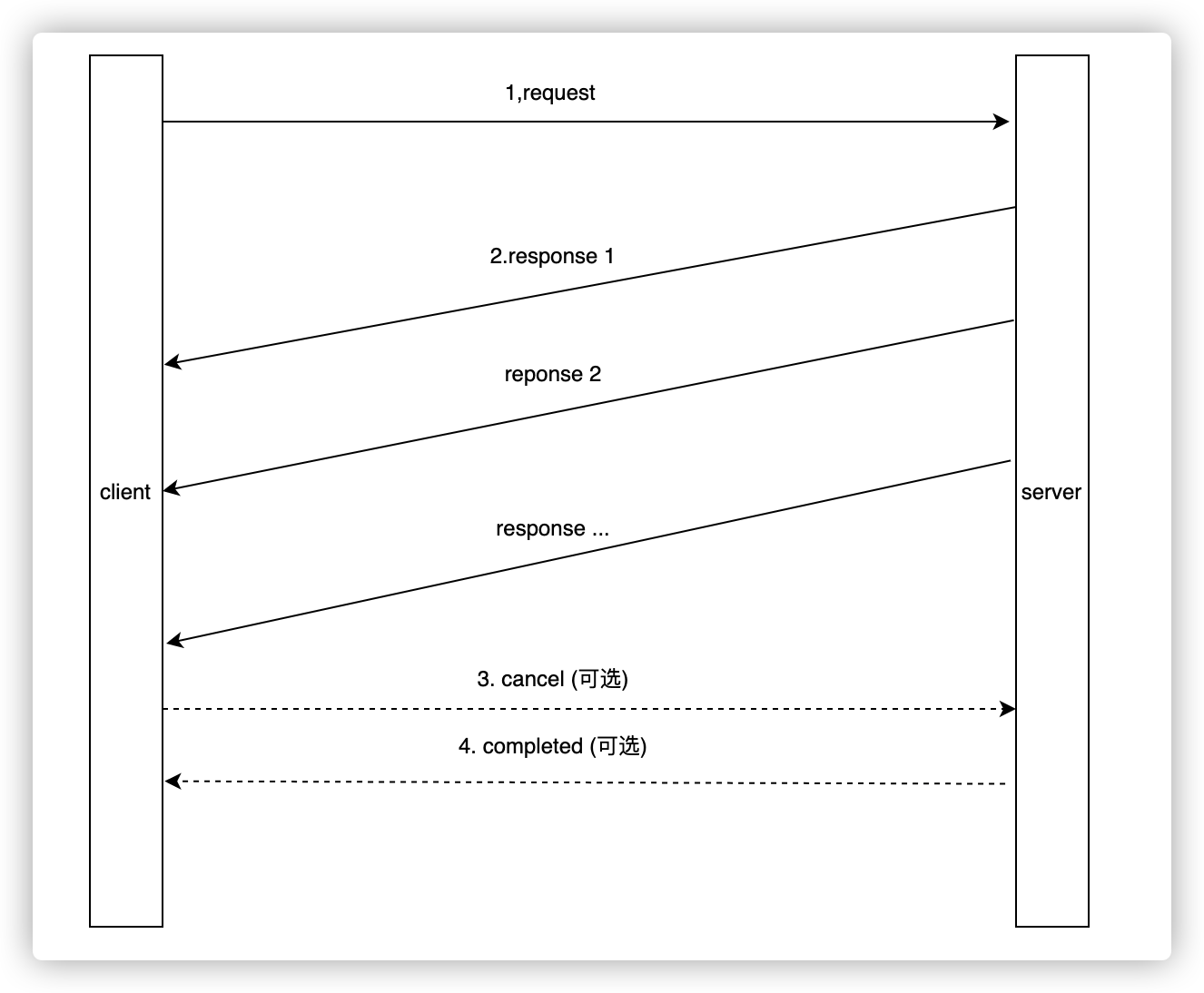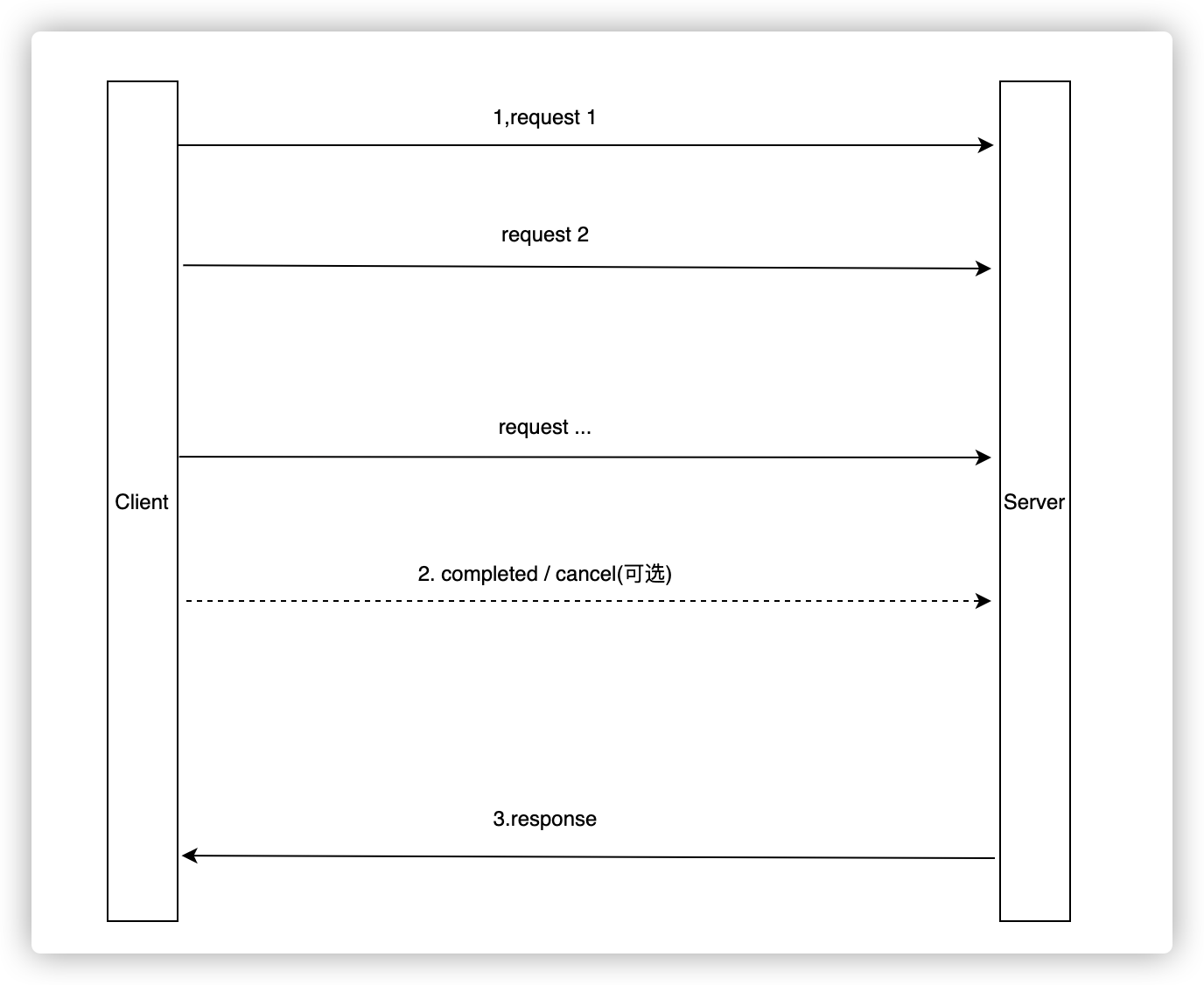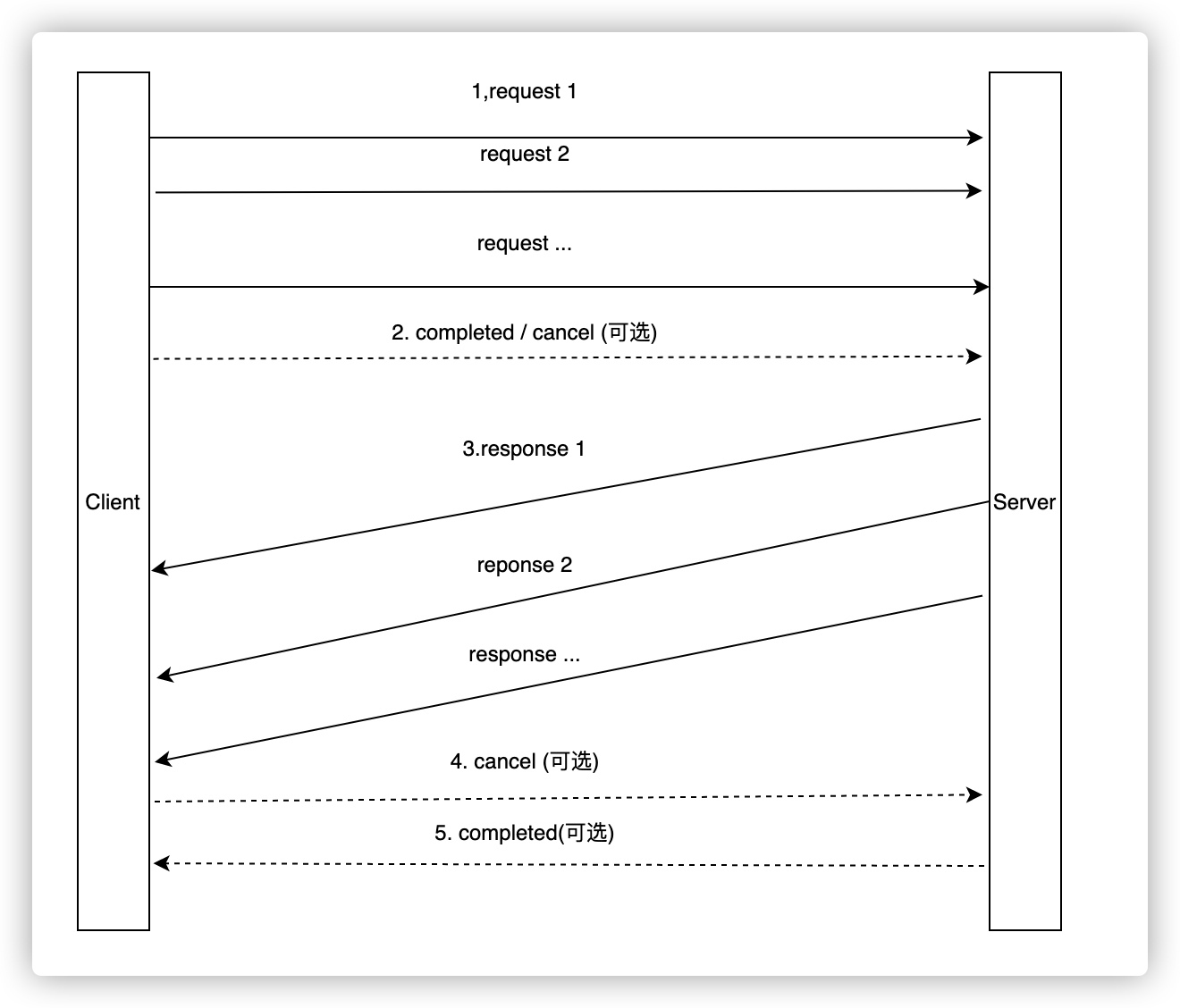Streaming Communication
Implementation principle of stream
Stream mode for the Triple protocol
From the perspective of the protocol layer,
Tripleis built on the basis ofHTTP2, so it directly has all the capabilities ofHTTP2, so it has the ability to splitstreamand full-duplex.In terms of the framework layer,
StreamObserveris provided to users as a stream interface to provide stream processing for input and output parameters. The framework makes corresponding interface calls when sending and receiving stream data, so as to ensure the integrity of the life cycle of the stream.
Enable new features of Triple
Stream stream
Stream is a new call type provided by Dubbo3. It is recommended to use stream in the following scenarios:
- The interface needs to send a large amount of data. These data cannot be placed in an RPC request or response, and need to be sent in batches. However, if the application layer cannot solve the order and performance problems in the traditional multiple RPC method, if the order needs to be guaranteed , it can only be sent serially
- In streaming scenarios, data needs to be processed in the order they are sent, and the data itself has no definite boundary
- In push scenarios, multiple messages are sent and processed in the context of the same call
Stream is divided into the following three types:
- SERVER_STREAM (server stream)

- CLIENT_STREAM (client stream)

- BIDIRECTIONAL_STREAM (bidirectional stream)

Due to the limitations of the
javalanguage, the implementation of BIDIRECTIONAL_STREAM and CLIENT_STREAM is the same.
In Dubbo3, the stream interface is declared and used as SteamObserver, and users can use and implement this interface to send and handle stream data, exceptions, and end.
For Dubbo2 users, they may be unfamiliar with StreamObserver, which is a stream type defined by Dubbo3. There is no Stream type in Dubbo2, so it has no impact on migration scenarios.
Stream Semantic Guarantees
- Provide message boundaries, which can easily process messages separately
- Strictly ordered, the order of the sender is consistent with the order of the receiver
- Full duplex, no need to wait for sending
- Support cancellation and timeout
Non-PB serialized stream
APIs
public interface IWrapperGreeter {
StreamObserver<String> sayHelloStream(StreamObserver<String> response);
void sayHelloServerStream(String request, StreamObserver<String> response);
}
The method input parameters and return values of the Stream method are strictly agreed. In order to prevent problems caused by writing errors, the Dubbo3 framework side checks the parameters, and throws an exception if there is an error. For
BIDIRECTIONAL_STREAM, it should be noted thatStreamObserverin the parameter is the response stream, andStreamObserverin the return parameter is the request stream.
Implementation class
public class WrapGreeterImpl implements WrapGreeter {
//...
@Override
public StreamObserver<String> sayHelloStream(StreamObserver<String> response) {
return new StreamObserver<String>() {
@Override
public void onNext(String data) {
System.out.println(data);
response.onNext("hello,"+data);
}
@Override
public void onError(Throwable throwable) {
throwable. printStackTrace();
}
@Override
public void onCompleted() {
System.out.println("onCompleted");
response.onCompleted();
}
};
}
@Override
public void sayHelloServerStream(String request, StreamObserver<String> response) {
for (int i = 0; i < 10; i++) {
response.onNext("hello," + request);
}
response.onCompleted();
}
}
Call method
delegate.sayHelloServerStream("server stream", new StreamObserver<String>() {
@Override
public void onNext(String data) {
System.out.println(data);
}
@Override
public void onError(Throwable throwable) {
throwable. printStackTrace();
}
@Override
public void onCompleted() {
System.out.println("onCompleted");
}
});
StreamObserver<String> request = delegate.sayHelloStream(new StreamObserver<String>() {
@Override
public void onNext(String data) {
System.out.println(data);
}
@Override
public void onError(Throwable throwable) {
throwable. printStackTrace();
}
@Override
public void onCompleted() {
System.out.println("onCompleted");
}
});
for (int i = 0; i < n; i++) {
request.onNext("stream request" + i);
}
request.onCompleted();
Serialized stream using Protobuf
For the Protobuf serialization method, it is recommended to write IDL and use the compiler plugin to compile and generate. The generated code is roughly as follows:
public interface PbGreeter {
static final String JAVA_SERVICE_NAME = "org.apache.dubbo.sample.tri.PbGreeter";
static final String SERVICE_NAME = "org.apache.dubbo.sample.tri.PbGreeter";
static final boolean inited = PbGreeterDubbo.init();
//...
void greetServerStream(org.apache.dubbo.sample.tri.GreeterRequest request, org.apache.dubbo.common.stream.StreamObserver<org.apache.dubbo.sample.tri.GreeterReply> responseObserver);
org.apache.dubbo.common.stream.StreamObserver<org.apache.dubbo.sample.tri.GreeterRequest> greetStream(org.apache.dubbo.common.stream.StreamObserver<org.apache.dubbo.sample.tri.GreeterReply> responseObserver);
}